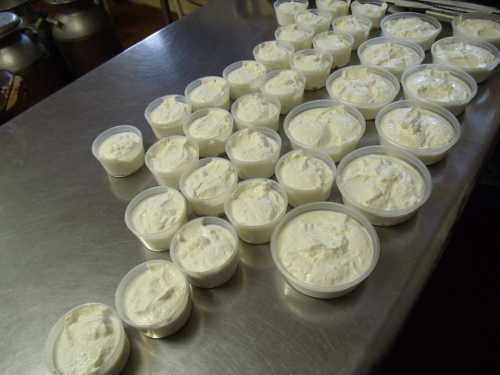
Lake County’s only commercial dairy lies outside Lakeport on picturesque Scotts Valley Road. Named for the herb that grows wild in nearby hills, Yerba Santa Goat Dairy is run by cheese-making brothers Javier and Daniel Salmon.
The only access into the dairy is via a rustic bridge slung over a shallow gorge in which a swollen creek flows after the winter rains. Three low-lying meadows are home to 87 milk goats, and a couple dozen yearlings – milk goats in waiting, so to speak – make their home in a fenced area at the edge of the meadow.
It is here that the brothers from Lima, Peru create the cheeses that are sought after locally, as well as throughout much of the San Francisco Bay Area.
This is the time of year that cheese production slows, as the milk goats have been carrying young since mid-September. Two very busy bucks have impregnated the entire herd, and the twice-a-day milking cycle has dwindled to one.

Come November, the does will not be milked at all. Instead, they’ll spend the winter wandering the hills, eating brush and the coveted Yerba Santa herb. Their babies will arrive in late February and early March, and after they’ve had a month or so to nurse, milking and cheese production will once again begin.
The Salmons also produce cheeses under the Bodega label, carried over from the dairy’s former location in Sonoma County. Generally their cheeses are available from April through October, though some locations may have a supply they can sell beyond October.
Milking more than 80 goats is a three-hour process, which means that in the peak of season, a full six hours of each day is spent coaxing milk from the does. Milking begins on machines (they have four in their milking barn) and is finished by hand.
The milk is pumped directly to a bulk tank, where it’s stored for a day at 38 degrees. The tank can hold up to 250 gallons, but peak-of-season production is generally about 80 gallons a day.
After a brief storage in the bulk tank, the milk is pumped into a neighboring room where handcrafted French and Spanish style cheeses are created. Both raw and pasteurized cheeses are made at the dairy.

Younger brother Daniel handles making the raw cheeses, which include a hard shepherd’s cheese, wonderful for grating; chevito, a semisoft cheese; and cabrello, which is similar to manchego, the historic sheep’s milk cheese made in Spain.
Raw cheeses are aged and allowed to mature for 60 days, while the pasteurized cheeses are sold fresh to stores, restaurants and the public.
Older brother Javier is in charge of pasteurized cheese production, which is generally a two-day process. After the milk is pasteurized, a culture is added. Once the cheese reaches the desired acidity, vegetarian rennet is thrown into the mix, causing the cheese to “clabber” or thicken.
The thickened product is put into cheesecloth bags and left to hang overnight, allowing the whey to drain from the cheese. The Salmons feed the resulting whey, a yellow liquid, to their goats. I was told by Javier that goat’s whey is traditionally drunk in Russia for longevity of life.
By morning, the content of the hanging bags is ready to process into fromage blanc, a creamy, spreadable cheese in tubs; chevre, fresh cheese shaped in soft balls; or fresco, a feta-like cheese with a short shelf life sold in tall wedges.

While many of the cheeses are flavored only with natural sea salt, others have ranch-grown herbs or peppers added. While I was there, a bowl of roasted Serrano peppers, bright green with blackened skin, stood ready to be mixed in with a batch of fromage blanc.
Goat’s milk doesn’t have to be homogenized. Unlike cow’s milk, which separates with cream rising to the top, the fat molecules in goats’ milk remain suspended in the liquid.
Goat’s milk is lower in fat than cow’s milk, and because the fat molecules are much smaller, it’s easier to digest. Its molecular makeup is closer to that of human milk, in fact, which gives many unable to tolerate cow’s milk an alternative for dairy products.
Cheese has been made from goat’s milk for thousands of years, and is likely one of the earliest made dairy products. While cow’s milk cheese has dominated the scene in the U.S., most of the world eats more cheese made from goat’s milk than from cow’s.
Like cow’s milk, goat’s milk is a very good source of calcium and the amino acid tryptophan. It is also a good source of protein, phosphorus, riboflavin (vitamin B2) and potassium.

 How to resolve AdBlock issue?
How to resolve AdBlock issue? 






